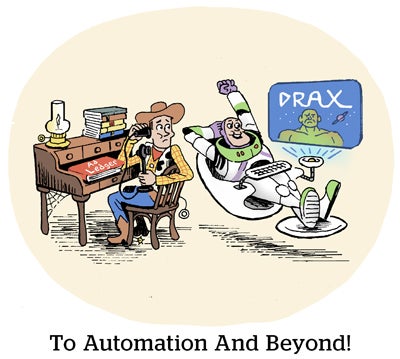Disney may be growing overall revenue, but it’s losing streaming subscribers. Not the best tidings the week before upfronts.
The entertainment giant reported its Q2 earnings for the year on Wednesday, and revenue is up 13% YOY, beating Wall Street’s expectations. But Disney+ lost a total of 4 million subscribers this quarter.
Shares dropped about 4% during after-hours trading on Wednesday, likely as a result of that subscriber loss.
Still, Disney’s streaming-related losses aren’t as bad as they could be. The company already reported peak operating losses in November, and things haven’t gotten worse. Partly due to the Disney+ price increase following the platform’s ad-supported launch in December, Disney was able to narrow its losses by $400 million this quarter, CFO Christine McCarthy told investors.
Going forward, Disney has two main priorities to keep the company moving in the right direction: content bundling and programmatic growth.
Holler for Hulu
Speaking of content bundling, Disney is trying to tighten its grip on Hulu.
On Wednesday, CEO Bob Iger announced that the company plans to incorporate content from Hulu into Disney+ in a “one-app experience,” which will launch in the US later this year.
Both platforms will remain available as standalone streaming services. For viewers who subscribe to both, Disney+ and Hulu content will share an interface.
This bundling is a “logical progression of our [streaming] offerings that will provide greater opportunities for advertisers,” Iger said. Inventory bundling allows for reaching more viewers with the same ad buy, which is why Disney isn’t the only programmer combining linear and streaming inventory.
“There’s real value in having live entertainment paired with Disney+ streaming,” Iger said, “and ultimately, that solution is Hulu.”
Hulu has more advanced ad targeting than Disney+, too, which is why Disney is giving its advertisers access to some of Hulu’s targeting capabilities now, with more to come in July.
“We’re still only scratching the surface of what we can do with advertising on Disney+,” McCarthy said.
Still, the fate of Hulu is somewhat in limbo.
Currently, Disney owns two-thirds of Hulu, with Comcast owning the other third. As per the terms of the agreement between the two companies, Disney can force Comcast to sell its stake in Hulu as early as January 2024.
Iger stayed vague about whether or not that will happen, but he told investors that Disney is currently having conversations with Comcast about Hulu’s ownership.
Programmatic pragmatics
In the meantime, Disney is focusing heavily on using programmatic to attract more advertiser budgets.
Disney reported 1,000 new advertiser clients over the past year, with over a third of its advertisers buying programmatically. That’s up from roughly 25% a year ago, Jamie Power, SVP of addressable sales, told AdExchanger.
Currently, Disney’s main growth driver on the programmatic front is its audience graph. The combination of Disney’s graph with recent third-party identity integrations can give advertisers higher match rates than identity partners alone, Power said.
Plus, Disney’s audience matches with Experian and LiveRamp are available in most demand-side platforms, Power added. Hence the recent integration with VideoAmp to make sure all that data matching is done within clean rooms.
More programmatic options means advertisers are able to shift around their campaign spending – including upfront dollars – and make optimizations in real time, Power said. After initial upfront deals, Disney advertisers can spend a part of their budgets programmatically to hit their full commitments, she added.
In short, content bundling and programmatic availability are both meant to woo advertisers into spending more money with Disney.
The more flexibility Disney can offer its clients now, Iger said, the better positioned it will be to win budgets once the ad market gets stronger.



















